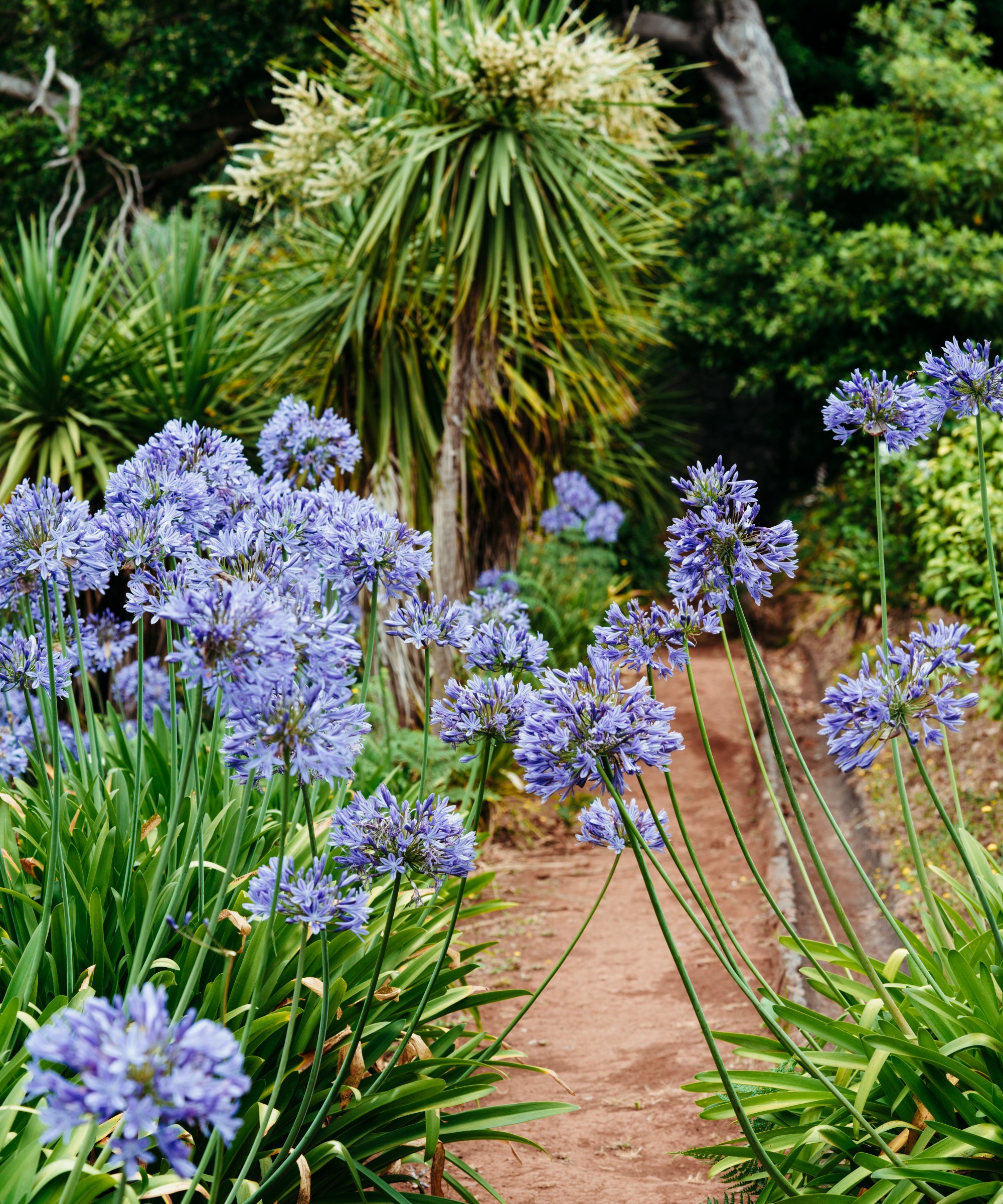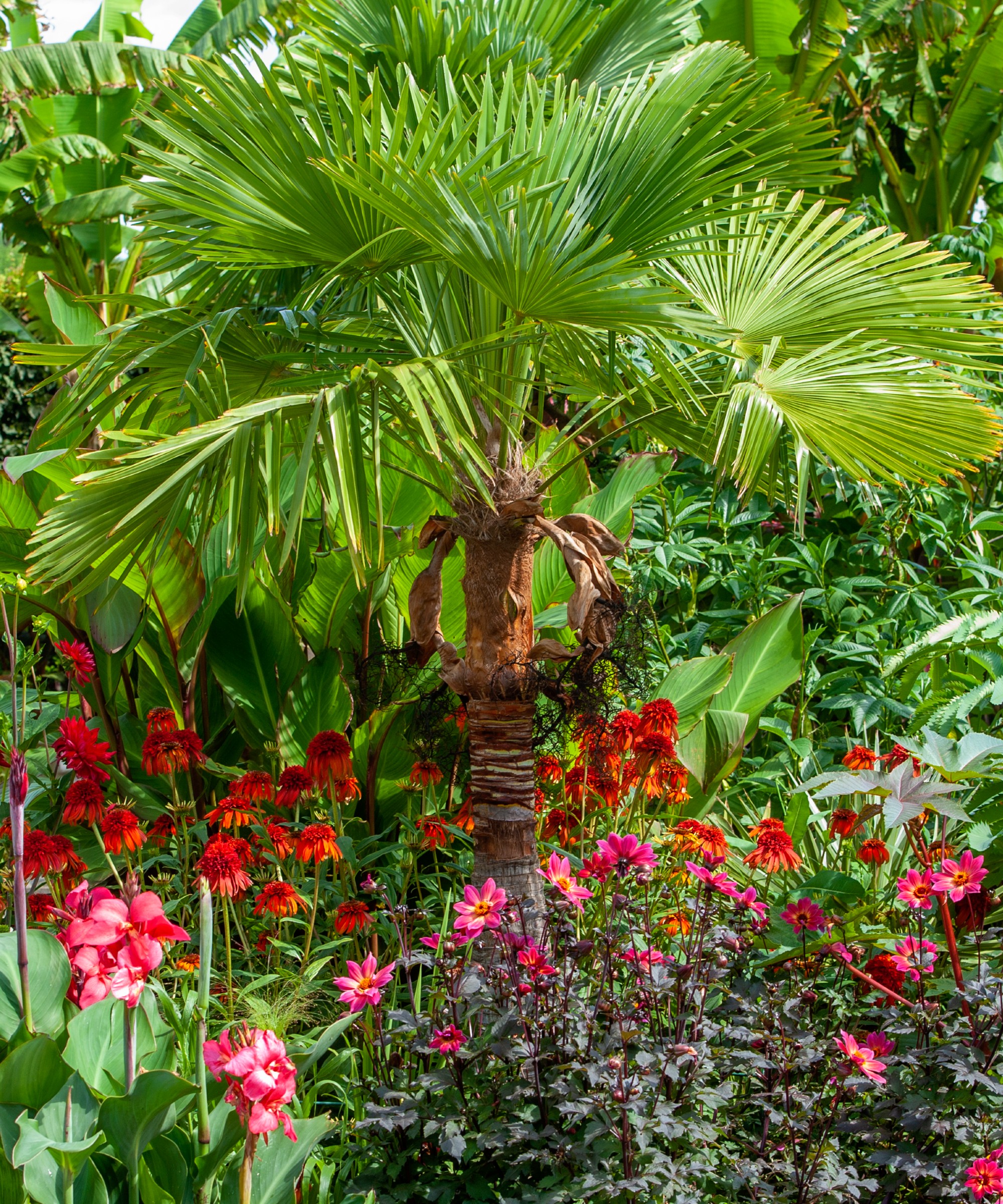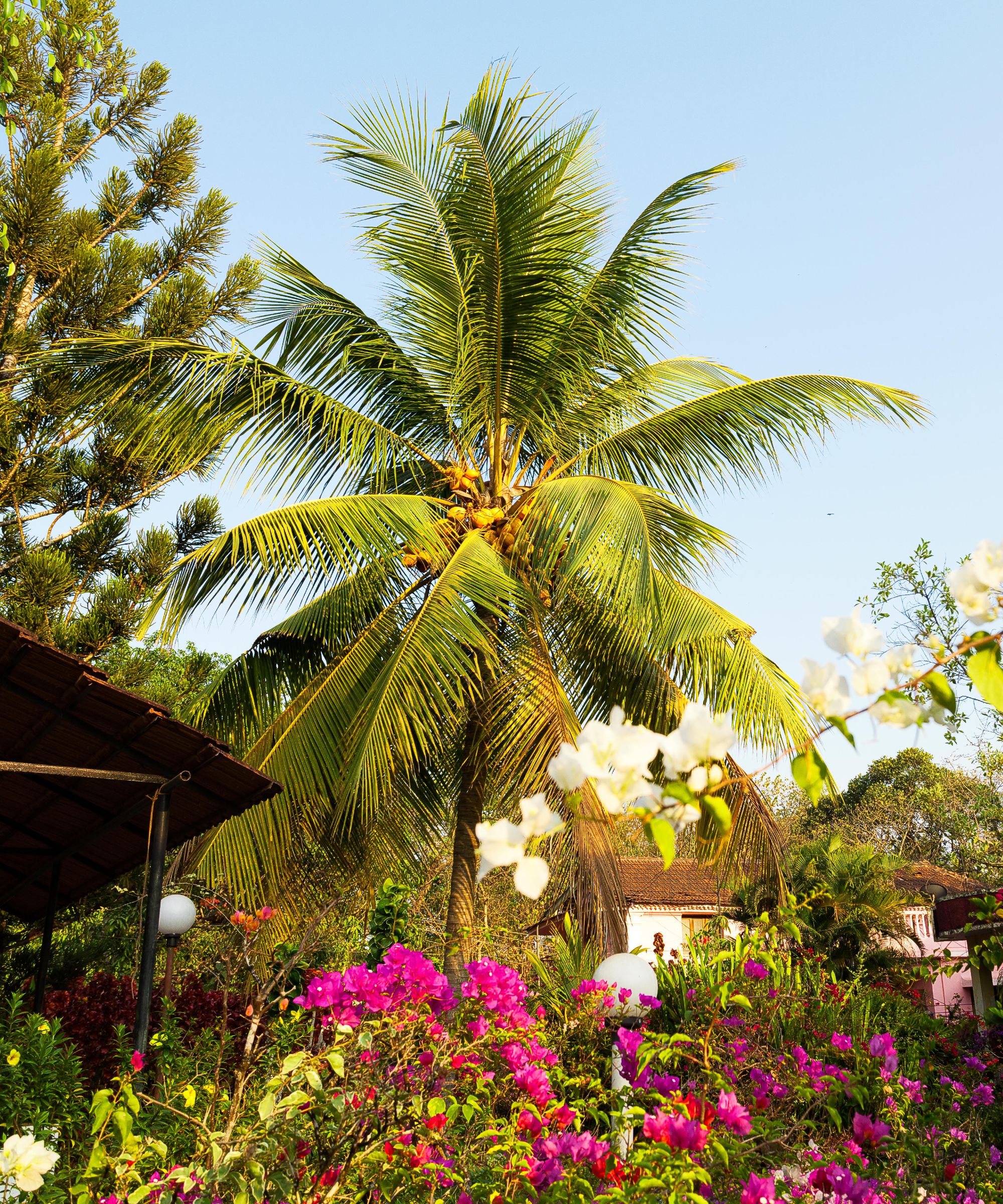How to trim palm trees safely – expert advice to follow before pruning
The act of trimming palm trees can be dangerous without the right advice – here's when to prune – and how to achieve the perfect cut


Knowing how to trim palm trees may initially appear unchallenging, but the process is not so seamless. Garden experts warn that pruning palm comes with risks – so it's important to follow safety precautions carefully – and when in doubt, go to the professionals,
While knowing how to grow a palm tree is a relatively simple way to bring architectural drama to your garden, maintaining the plant comes is less straightforward. In many cases, pruning your palm can do more damage than good and should, consequently, be left to grow freely. However, if you decide that you do need to prune, it is vital to cut with caution.
How to trim palm trees – according to professionals

Unlike knowing how to prune olive trees and other popular summer plants, it can be hard to know when to cut palms. Here's what the experts want you to know.
When should you trim palm trees?
The first step in knowing how to trim palm trees is understanding whether or not you should cut in the first place. And while it may sound unlikely, in many cases, the answer is no.
'Palm trees are plants that don’t need to be trimmed or pruned often,' says Jeremy Yamaguchi, the CEO of Lawn Love. While it is always a good idea to know how to prune azaleas and other summer staples (to encourage more growth), it is not the case for palm trees.
'You never want to prune healthy, green fronds (unless they are blocking something and have to be removed) because that will most likely stunt growth and hurt the tree,' Jeremy says. 'The only fronds you should trim are the ones that are entirely brown – not the ones that look like they are turning brown or yellow.'
So, while you avoid trimming for aesthetic purposes – it is acceptable to remove dead or damaged fronds. It is also better to remove leaves that may taint visibility (for example, if you have palms near a roadway).
How to trim palm trees in your garden

Before trimming, it is important to familiarize yourself with safety precautions and invest in the right tools for the job. 'Be aware that many palm trees are poisonous to humans,' says Landscape Design Gardening Supervisor Melody Estes. So, trimming safely is of the highest priority. Here's what the experts want you to know.
What tool do you use to trim palm trees?
Melody recommends choosing a small pruning saw with a long handle that is ideal for palm trees in your garden. It is vital to sterilize your tools before using them, so you will need to keep rubbing alcohol close by as well.
Alongside the alcoholic gel, Melody says that you must wear gloves and protective clothing throughout the entire process.
What is the best way to trim a palm tree?
After cleaning your tools with rubbing alcohol, you should assess how to make your cuts to ensure no part of the tree will fall on you or anyone on your property.
The experts suggest starting with the lower fronds before moving upward (so your path is as clear as possible). 'Then when you make your cuts, aim to make them about 2-3 inches away from the trunk itself,' Jeremy says.
Melody adds that removing the dead fronds at the base of its trunk means they are easier to spot because they are browner than the green ones higher up the tree.'This will allow more light into its canopy and make it easier for new fronds to grow there,' she says.
If you are in any doubt about how to cut, you should seek the assistance of a professional gardener who is trained to prune your tree safely.

How do you dispose of palm cuts?
As the experts emphasize, you need to handle your palm with caution. It is unsurprising, therefore, that many states have specific instructions for disposing of palms – so you check the advice that is relevant in your local area.
When handling the cuts, it is important to ensure you wear your gloves to avoid any risk of contracting the palm and harming yourself. You should also ensure you remove all residue to ensure your garden ideas stay safe long after the cutting is complete.
Sign up to the Homes & Gardens newsletter
Design expertise in your inbox – from inspiring decorating ideas and beautiful celebrity homes to practical gardening advice and shopping round-ups.

Megan is the Head of Celebrity Style News at Homes & Gardens, where she leads the celebrity/ news team. She has a history in interior design, travel, and news journalism, having lived and worked in New York, Paris, and, currently, London. Megan has bylines in Livingetc, The Telegraph, and IRK Magazine, and has interviewed the likes of Drew Barrymore, Ayesha Curry, Michelle Keegan, and Tan France, among others. She lives in a London apartment with her antique typewriter and an eclectic espresso cup collection, and dreams of a Kelly Wearstler-designed home.
-
 How to grow crepe myrtle in pots – and transform even the smallest of yards with dazzling flowers this summer
How to grow crepe myrtle in pots – and transform even the smallest of yards with dazzling flowers this summerGrowing crepe myrtles in pots will inject splashes of brilliant color into your outside space
By Thomas Rutter Published
-
 I've spent over 200 hours testing vacuums and swear by my two Dysons – this is how I properly clean a Dyson vacuum filter for longer-lasting appliances
I've spent over 200 hours testing vacuums and swear by my two Dysons – this is how I properly clean a Dyson vacuum filter for longer-lasting appliancesYour Dyson vacuum will last much longer and clean at its best
By Dan Fauzi Published